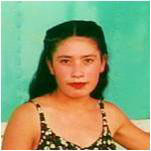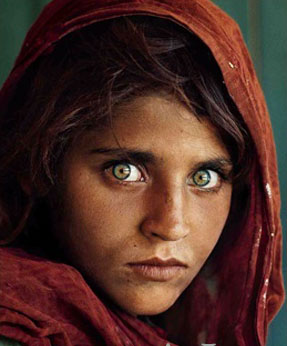


Controlling the Women of Juarez through the Beauty of an Image
Psychoanalysis deals with "subjectivity, sexuality, and the unconscious". (Rose, 109) As a form of
analysis it "conceptualizes both the viewer of the image and the image itself"; thus the image
itself and the audience who interprets the images are the fundamental sites of meaning production
in which psychoanalysis examines. (Rose, 109-110)
Women have been subjected to pain and suffering through out time. Wolf describes how this pain
was subsided in the past fifty years by a female revolution which was characterized by: the
introduction of anesthesia for child birth, the legalization of the pill and abortion,
and women's ability to become financially and ultimately sexual independent by entering the work
force. However, this new independence from an age old pain was quickly thwarted by a new form of
pain, which was created by the"Beauty Myth". (Wolf, 219)
For the women of Juarez, who in the past ten years have just
joined in on this revolution, their pain, like the American female, was also replaced with
the constant need and desire to be beautiful. (Wolf, 219) The beauty myth in reference to Juarez
can be seen as an optical weapon used to counteract the recent advancements and "breach in Power
structure" by the female maquiladora workers. (Wolf, 10)
By participating and ultimately gaining freedom in a historically and culturally dominant male
workplace women are in essence, according to Joan Riviera, becoming "non-castrated". (Rose, 123)
By performing a male job in a male world and most importantly becoming the bread winners they are
in essence becoming a man. However, in order to still fit into the male-hierarchy social structure
these women are taught through disciplines of culture to "conform to expectation of female behavior"
by literally masking their bodies with feminine clothing and masking their faces with excessive
makeup. (Rose, 123) Women as beauties are not simply born into this identity, but produced and
designed through un-natural social practices. This "masquerade" is not merely a way for females
to identify themselves with in this system, but most importantly the ultimate point of male
identification. (Rose, 123)This form of masquerade can be seen in the photos of the murder victims.
The women were unconsciously performing their part of what the male-hierarchy in Juarez desires.



They are all young with dark long brown hair, dark luscious lips that have heavily applied lipstick, light colored skin, dark made up eyes, and clothes which shows their flesh. All of these women would be considered attractive and desirable in Mexican culture. The problem with make-up and female fashion is that when women do not wear it they are subjected to feeling unseen or insufficient; thus these women feel the need to live up to certain social standard of beauty so they wear makeup and dress in a certain manner which is desirable to men. Phallocentiric visions of women and beauty are determined by masculine practices and procedures of seeing, in which women are objects for visual pleasure. (Rose, 143) According to Linda Nochlin, gendered rituality is biased in the sense that dominant ideologies have forced us to only find women as "suitable objects for sexual display". (Rose, 115) Thus, this discursive production of maquiladora female workers represents them in terms of " fetishistic scopophilia".(Rose, 118)
You might be asking yourself 'How are these women being objectified to the masculine gaze'?
The close examination of the women's portraits during the investigation by the police, maquiladora male managers, and the male public can be seen as disturbing and perverse example of scopophilia, which is known as "pleasure in looking" (Rose, 106). As a society we are obsessed with crime, murder, and sexual deviances. We are constantly bombarding ourselves with images in T.V. shows, films, and books about rape and murder of women, which we are getting pleasure and entertainment from. Not only do these women's pictures serve as a reminder of their violent and sexual deaths, but they are a means of visual satisfaction. The police, other male government agents, and the general male population will gaze upon these photos and are given the option to punish the women for their beauty which is linked to their sexuality.


In Edwards essay, Cover to Cover: The Life Cycle of an Image in Contemporary Visual Culture, we see how the image of a poor, young, and beautiful Afghan girl, who is living in a region of social, political, economic distress and a country which is racked with war, is associated with "beautiful suffering". (Edwards, 77) This is an interesting parallel to the images of the Juarez women who are also poor, young, and beautiful women that lived in a region of social, political, and economic distress and a country which is racked with drug war is also associated with this idea of "beautiful suffering". Again as Wolf explains that women should not only suffer to be beautiful, but women's "suffering is beautiful". (Wolf, 254) Thus, the Juarez murder victim is a metonymic sign which is connected with notions of suffering through beauty.
These photos areseen as non-threatening to masculinity, while being a timely and painful reminder to the female of the importance of beauty and the contradictory danger in possessing it. These women were chosen because of their beauty. They were tracked down through surveillance as objects of physical and visual pleasure and even in death their images live on as permanent access for the male gaze to their beauty and visual sexuality. Wolf points out the intricate link between beauty and sexuality. (Wolf, 11) It is no coincidence that all of these women are young and posses what Mexican culture would call beauty and they suffered violent sexual crimes. By killing these women these men are given the opportunity to not only dominate them physically, but create a male dominate perspective of them in death, which resonates throughout the male perspective. The portraits of these women serve as reminders of the age old saying that "beauty is pain"; and are also an example of how a photo that is recontextualized into the male sexual perspective can gain totally new and different meanings.